Welcome to my Newly Completed Clayton House Portrait Watercolor Series!
Clayton, Missouri, a beautiful city in St. Louis County, is part of the greater St. Louis area. I am particularly fond of Clayton due to its incredible wealth of house portrait subjects. Not only is there an eclectic mix of historic homes in terms of architectural styles, but they are all so uniquely different. The area has provided me with great artistic inspiration for my custom home portraits series.
Architectural History of Clayton
Clayton, Missouri, has a rich architectural history that reflects its development over time. Early Settlement began in the 1800’s when Clayton was initially established as a rural area with farms and small settlements. The architectural style of this period often included simple vernacular structures, reflecting the rural and agrarian nature of the community.
In the late 19th to early 20th Century, Clayton experienced growth and urbanization, architectural styles shifted to reflect the trends of the late 19th and early 20th centuries. This might include styles that can be found in these house portraits below, including Victorian, Queen Anne, Colonial Revival and Georgian style homes.
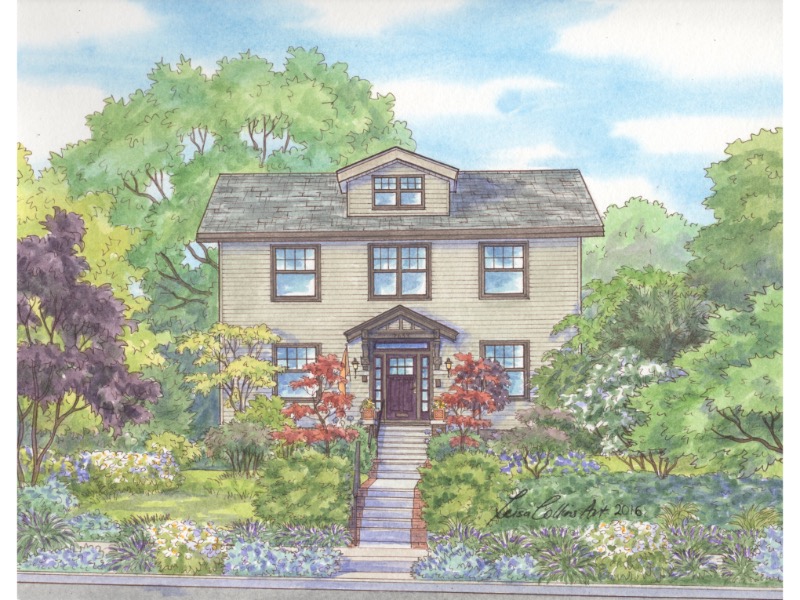
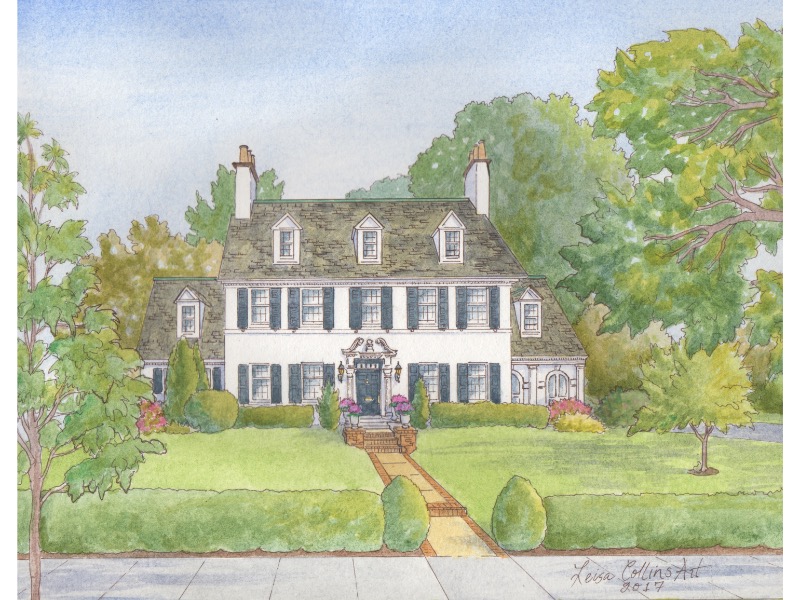

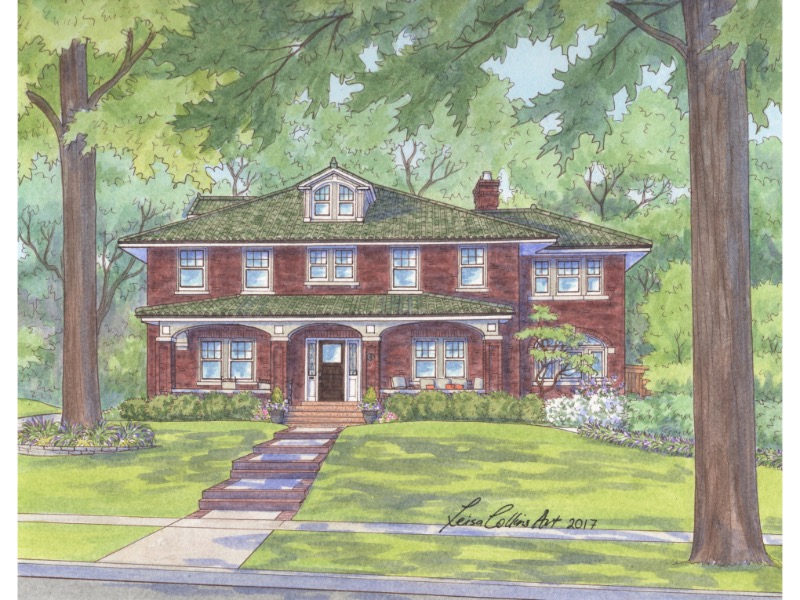
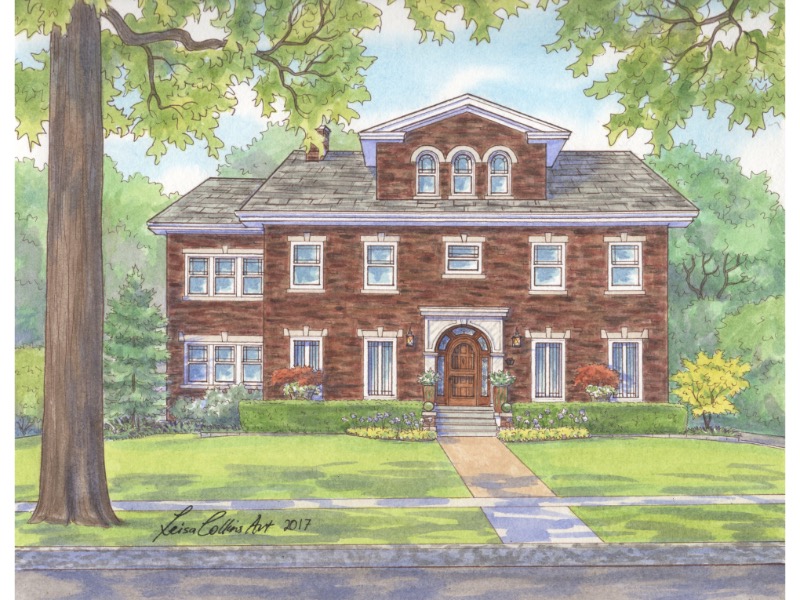
Suburban Development mid-20th Century
In the mid-20th Century, with the expansion of streetcar lines, Clayton became more accessible, and suburban development increased. Residential areas saw the emergence of a myriad of styles such as Craftsman, Tudors, Cape Cods and occasionally Spanish Revival and Mediterranean during this period. Examples of these Clayton homes can be seen below, depicted in my house portraits.
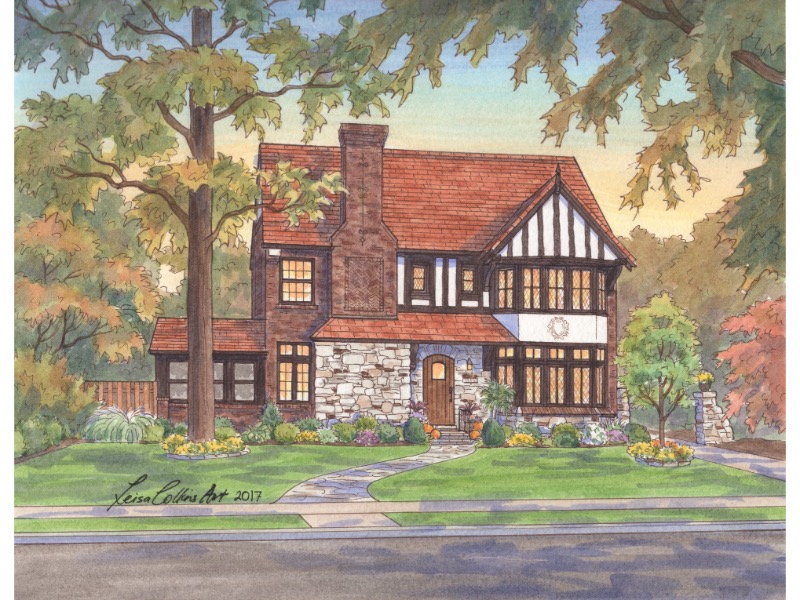
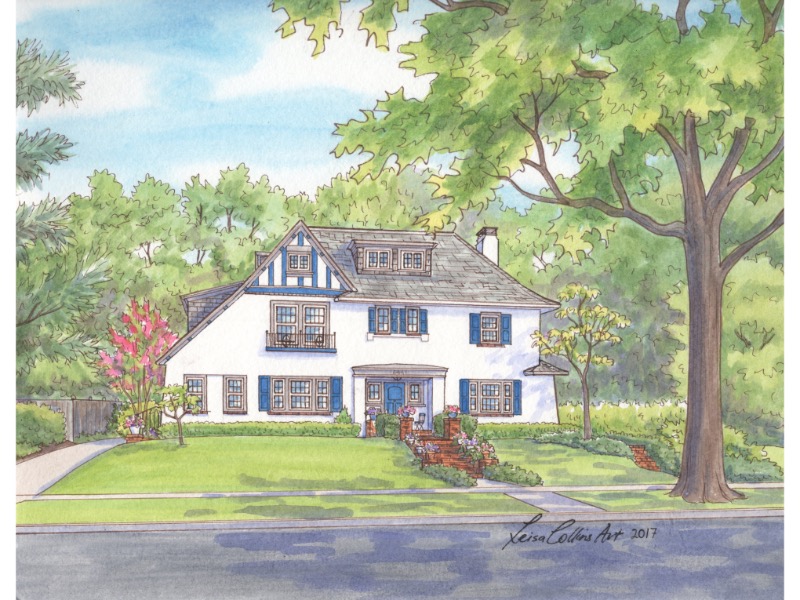
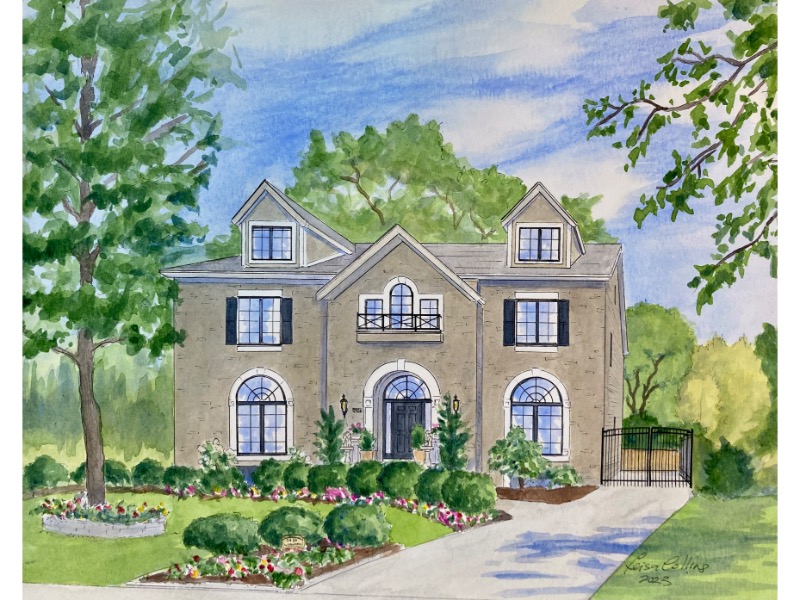
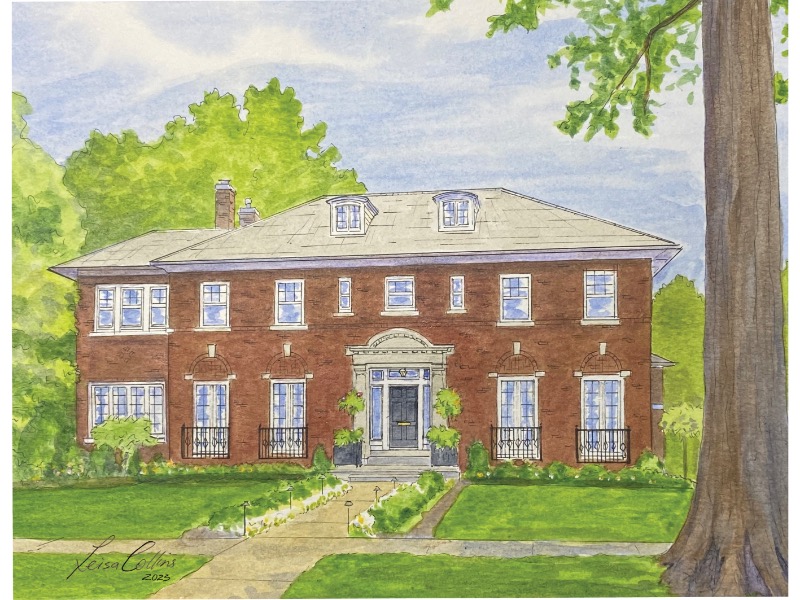
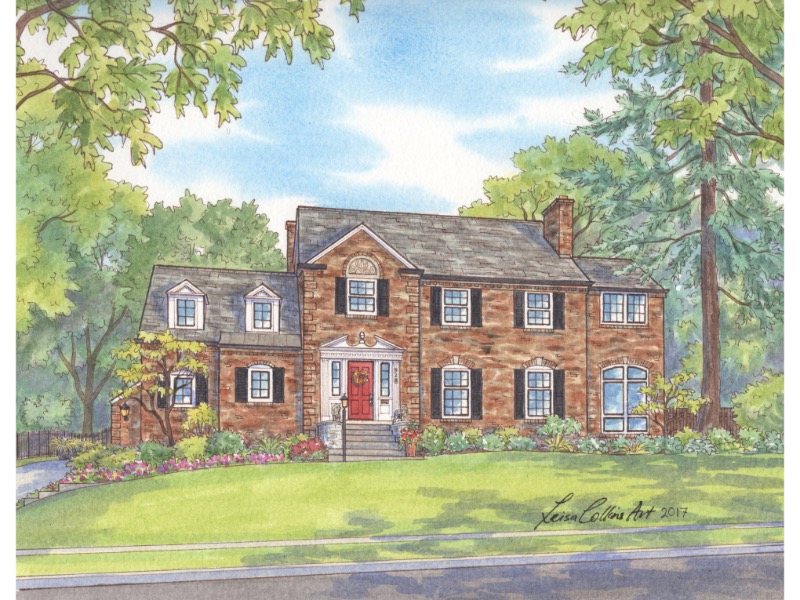
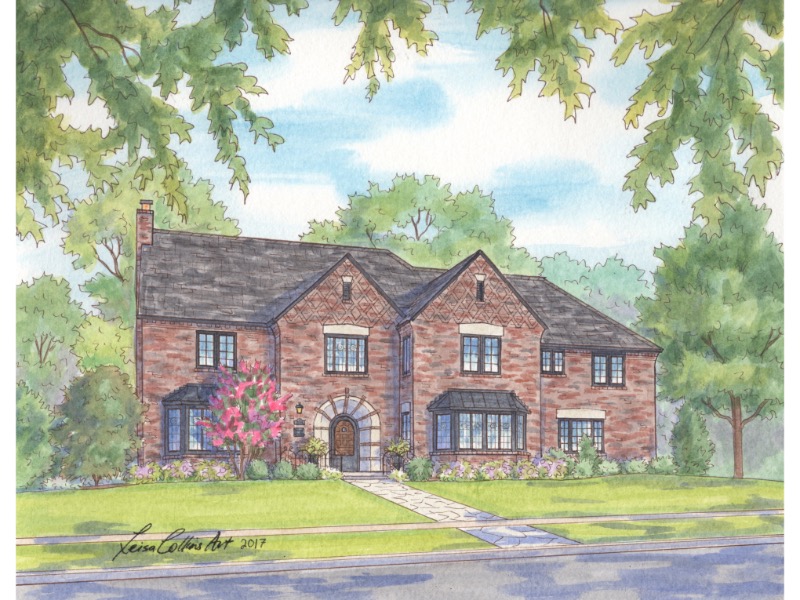
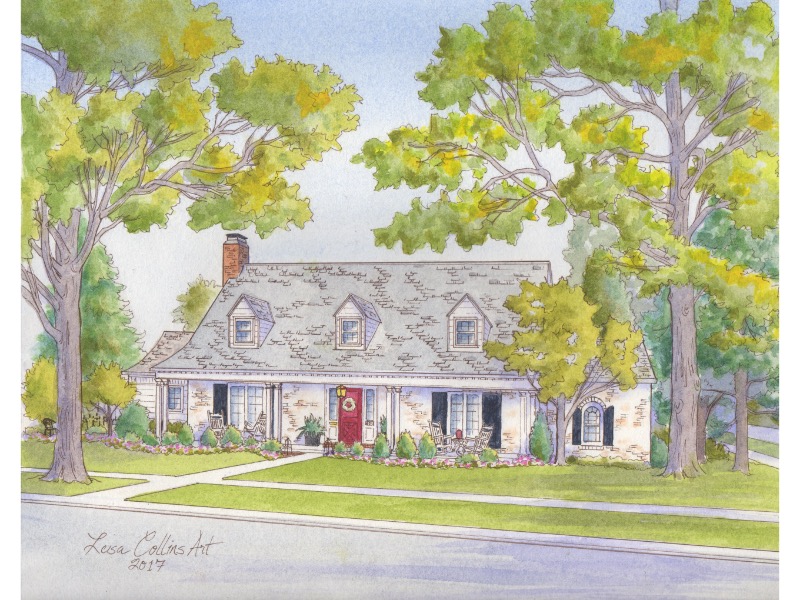
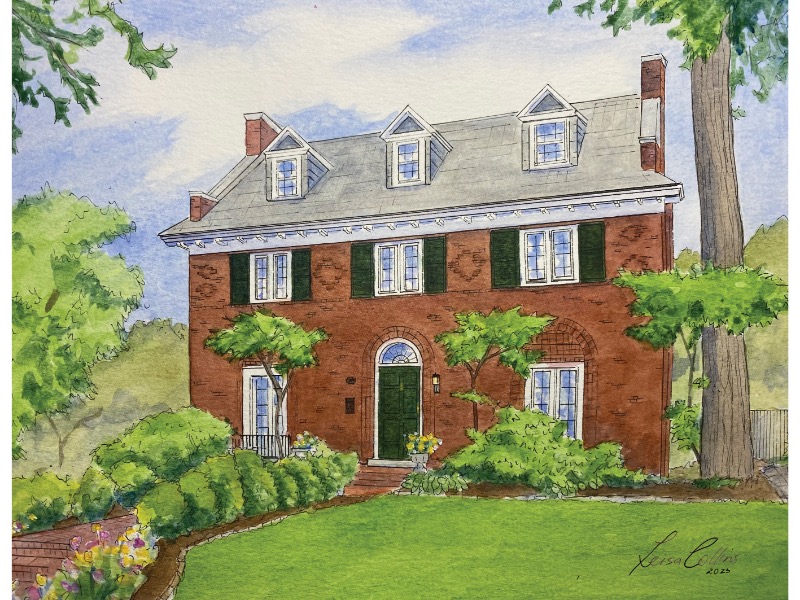
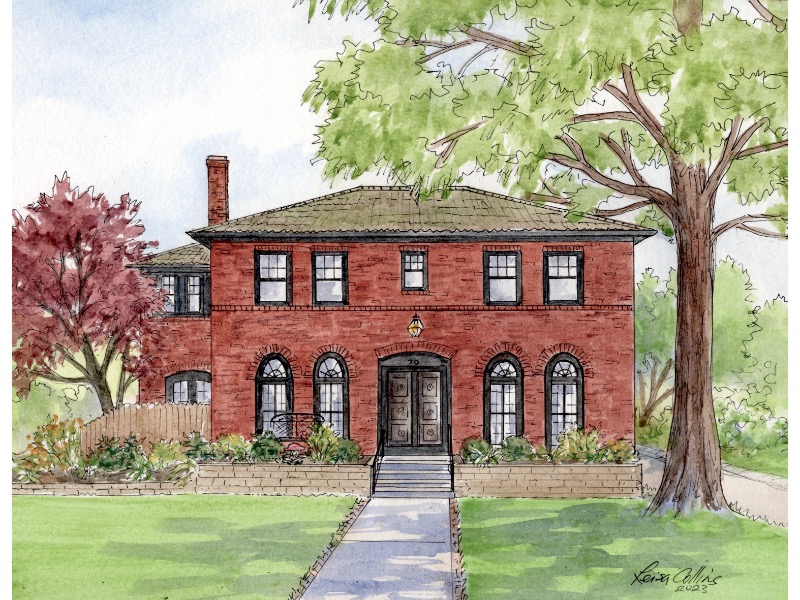
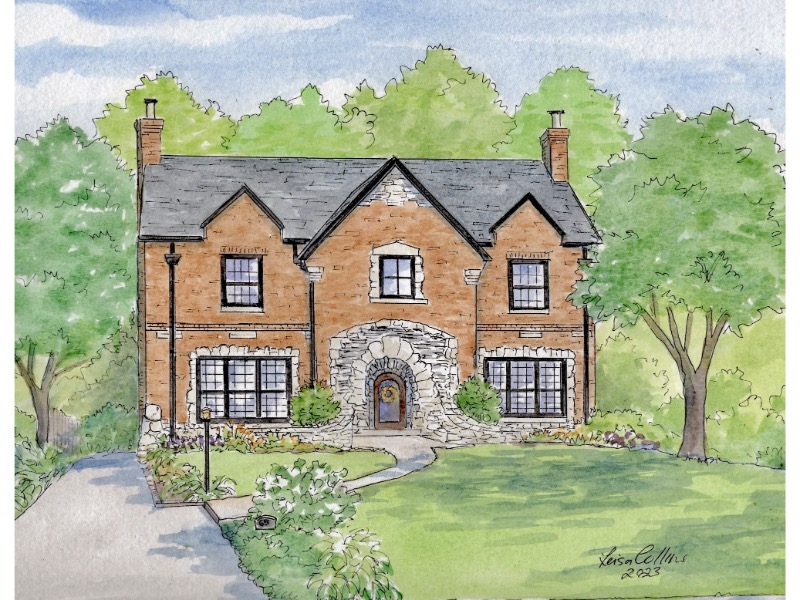
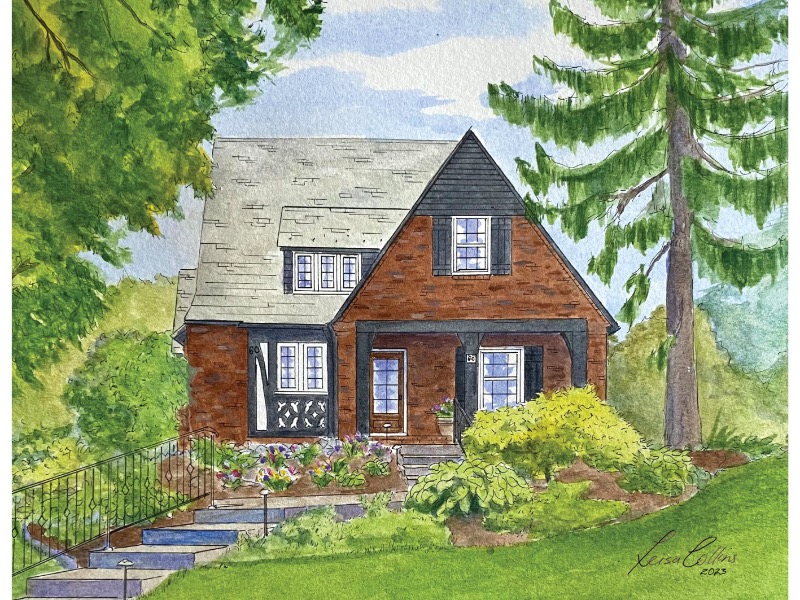
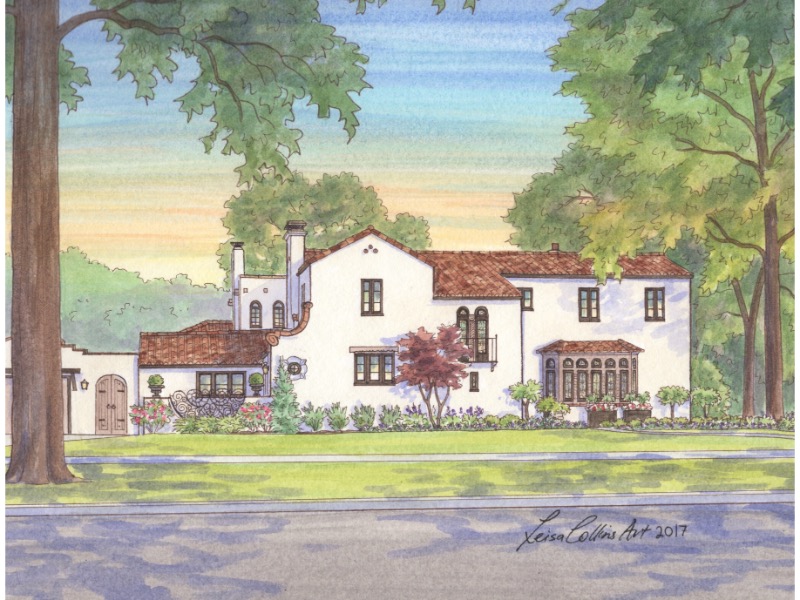
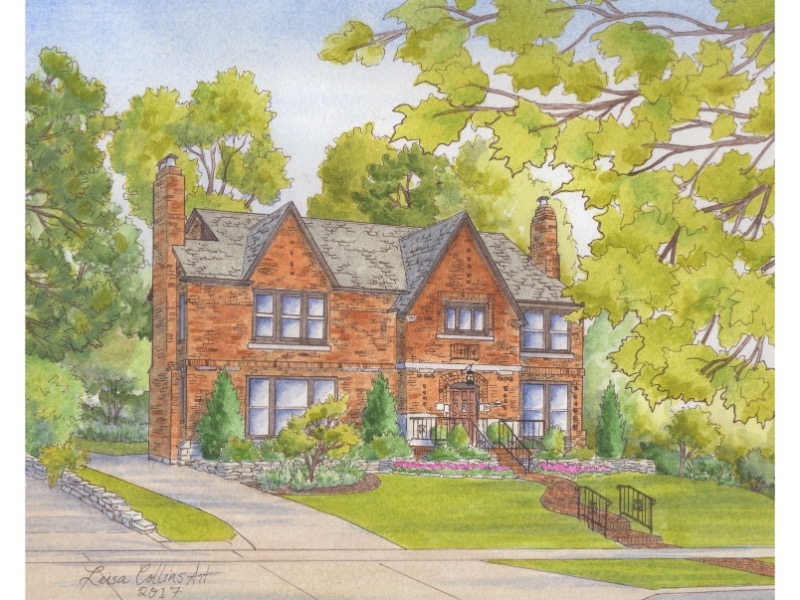


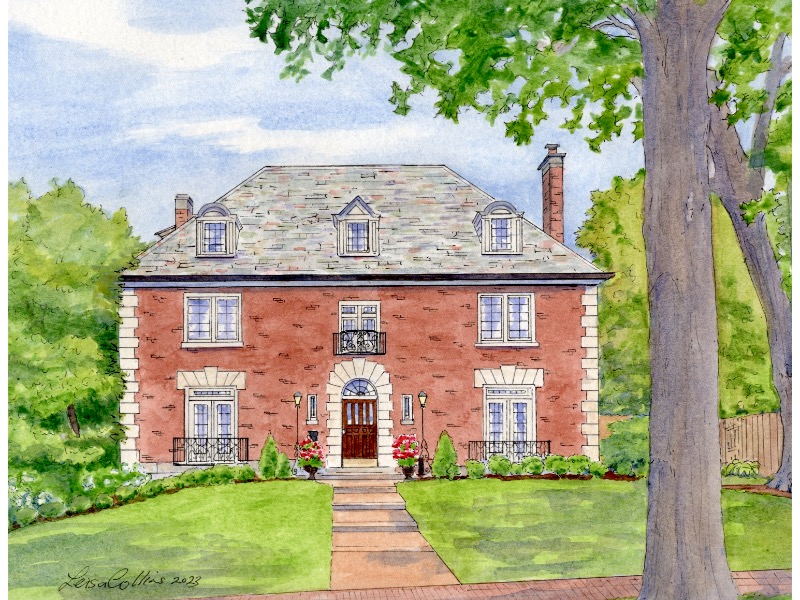
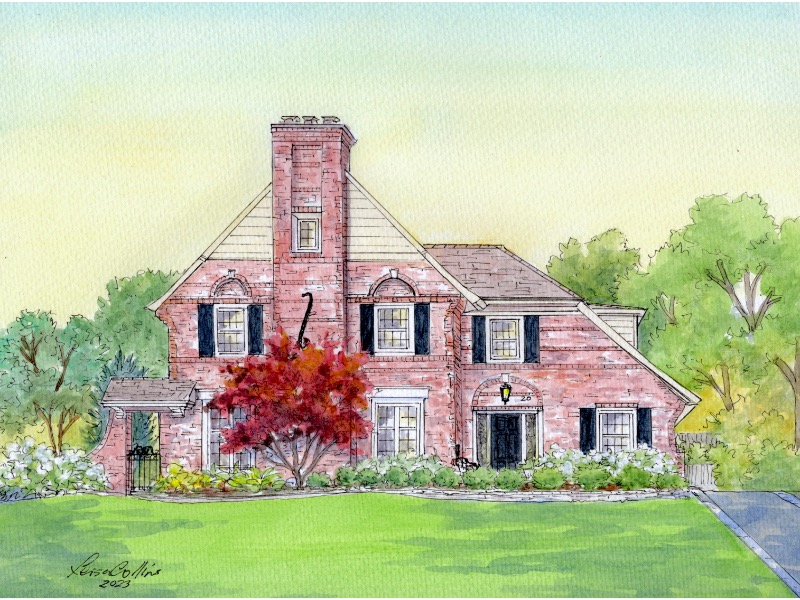
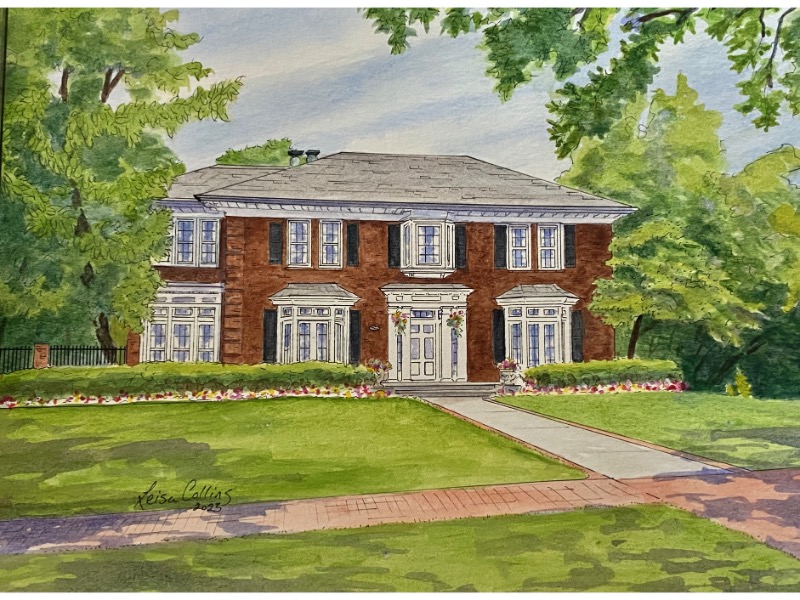
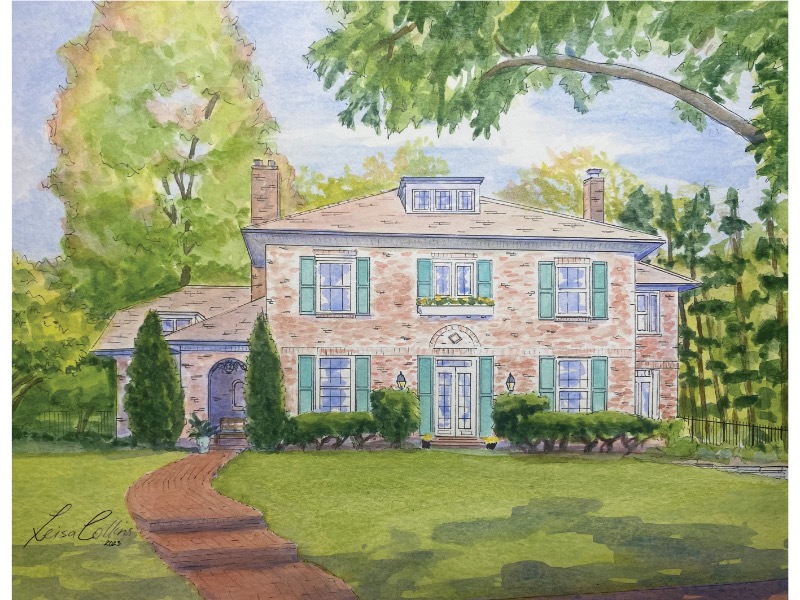
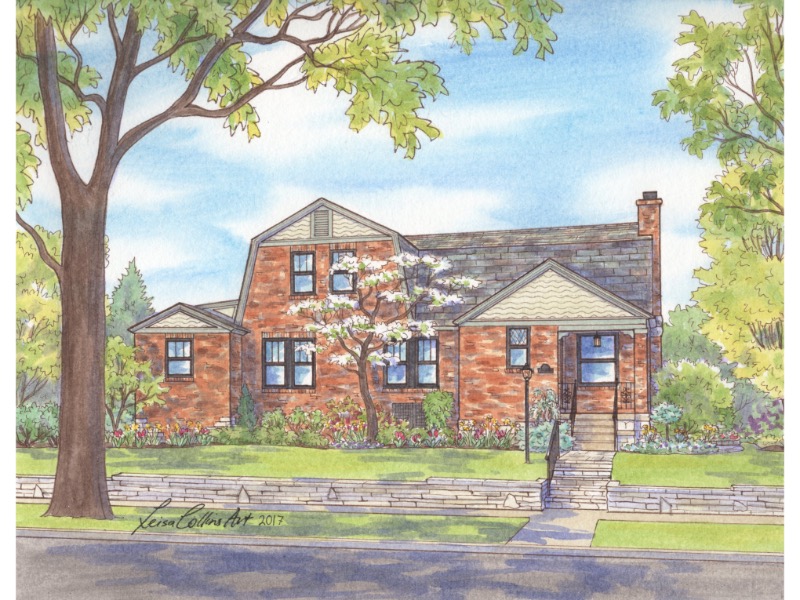

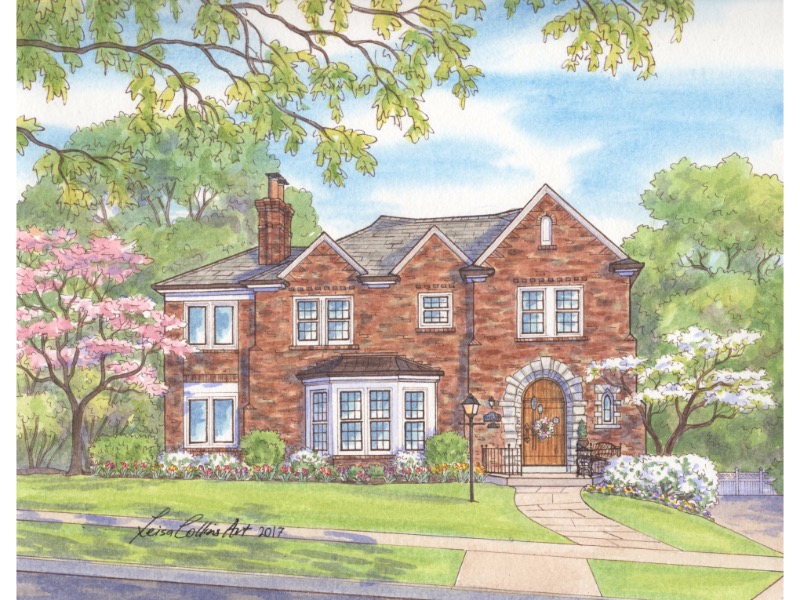
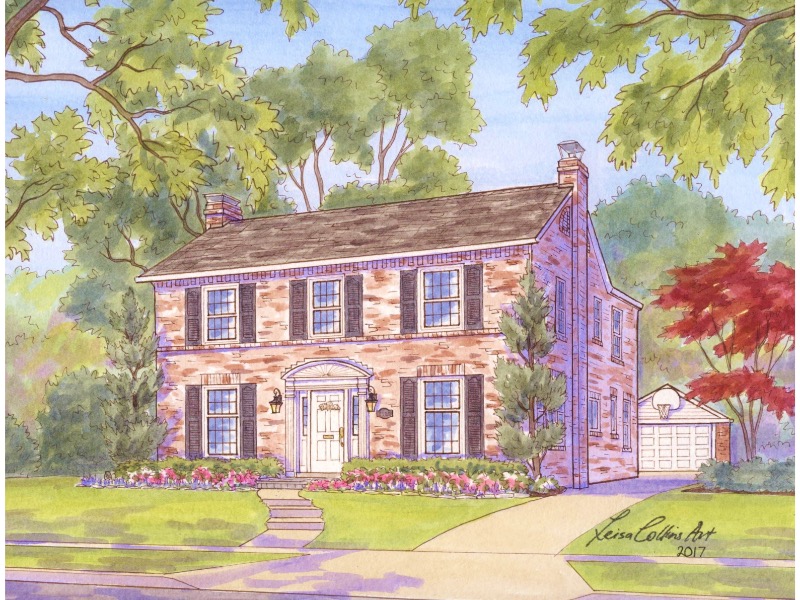

Tennessee Williams and Coming of Age in Clayton, MO:
References to Tennessee Williams’ time in St. Louis are sprinkled throughout his work. His family moved there in 1918 when he was seven years old and their first home was in the Central West End neighborhood. Later the family moved to the home below on Arundel Place in Clayton, a city that borders St. Louis. The Tivoli Theater and the Saint Louis Art Museum were frequent stops for the young Tennessee while he was growing up.
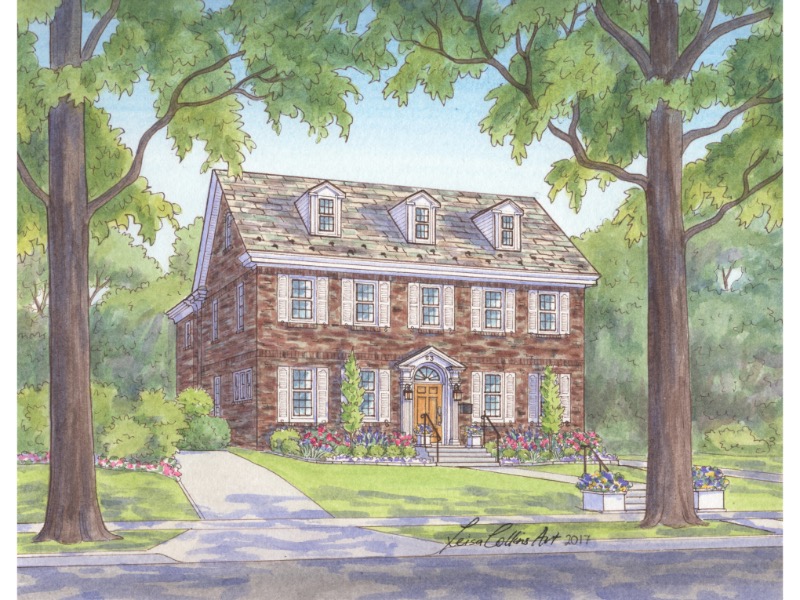
Post-World War II Era:
The mid-20th century brought changes in architectural preferences, with an increased focus on modern design. Ranch-style homes and mid-century modern architecture became prevalent during this time.
As the county seat of St. Louis County, Clayton developed a substantial commercial and civic presence. The Clayton Central Business District (CBD) features a mix of architectural styles, including modern skyscrapers, mid-century buildings, and more traditional structures.
The city has experienced ongoing development and redevelopment, with a mix of historic preservation and new construction and has sought to balance modern architecture with the preservation of its historical character.
An important part of the architectural history of Clayton, is that it also includes many attractive green spaces and parks. Shaw Park, for example, is a central feature with its own architectural elements and designs.
Preservation Efforts in Clayton:
Over the years, there have been efforts to preserve and protect historic buildings in Clayton. The Historic Preservation Board of the Clayton city government and a local organization, Clayton Community Foundation have played important roles in maintaining the city’s architectural heritage. In my interaction with residents of Clayton I have found there is great respect for preserving the historic legacy of the city, Many home owners I have met, who now have the above portraits on their walls, are equally passionate on this subject and many have invested much time, money and effort to restore their homes or maintain the historic integrity of their house and general area.
History of Clayton
Whenever I create a house portrait series of paintings of an area, I always like to study the history of it, as it explains how the architecture evolved as well. So here is a little history about the city of Clayton.
In terms of early settlement, the area that is now Clayton was originally inhabited by Native American tribes, including the Osage and Missouri tribes. European settlers began arriving in the early 19th century, and the region became part of the Louisiana Purchase in 1803.
Clayton was officially founded in 1877 and was named after Ralph Clayton, a prominent St. Louis businessman. In the late 19th century, the area developed as a residential suburb, attracting wealthy residents who built elegant homes.
It was the arrival of the railroad in the late 1800s that contributed to Clayton’s growth, making it more accessible and facilitating economic development.
County Seat and Urbanization:
In 1877, Clayton became the county seat of St. Louis County, a position it still holds today. The city saw further development and urbanization throughout the 20th century, with the construction of government buildings, businesses, and residential areas. In the late 19th century, the area developed as a residential suburb, attracting wealthy residents who built elegant homes.
Cultural Hub and Modern Development:
Over the years, Clayton has developed into a major economic and cultural hub in the St. Louis metropolitan area. It is known for its upscale residential neighborhoods, commercial districts, and cultural amenities.
In recent decades, Clayton has experienced ongoing development, including the construction of modern office buildings, high-rise condominiums, and shopping areas. The city has become a center for businesses, legal services, and finance. Clayton is also home to numerous educational institutions, including Clayton High School, which has a strong reputation for academic excellence. The city provides a range of services, and its government offices are located in the historic St. Louis County Courthouse. The city is also known for its vibrant community events and festivals. Clayton boasts various cultural and recreational facilities, such as parks, theaters, and museums.
Overall, Clayton has evolved from a primarily residential suburb to a dynamic city with a mix of residential, commercial, and cultural elements, contributing to the vitality and architectural historic legacy of the St. Louis metropolitan area.
I hope you have enjoyed my house portrait tour through some of the beautiful tree-lined streets of Clayton.
Until next time,
Leisa

